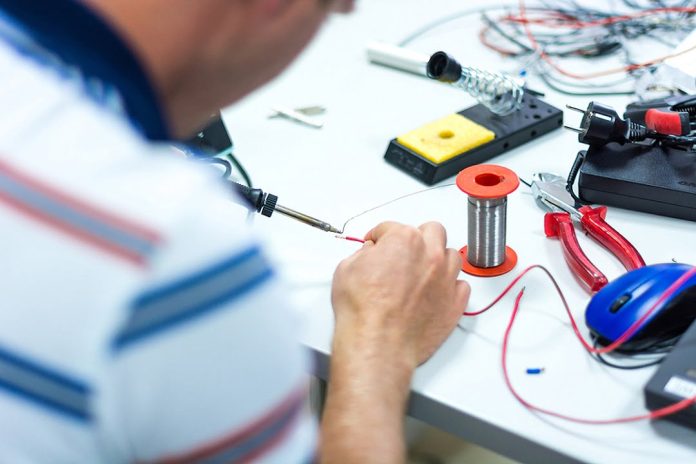Would you recommend soldering the termination wires of 7-strand, 4-core cable, or is it acceptable to crimp or just twist/fold wires, then tighten termination screws?
Soldering wires to connection points is best practice in many applications but twisting, folding and crimping is best practice in clamp termination blocks. Certainly, soldering multiple fine wires into a composite makes them easier to solder to a ferrule, lug or crimp connector. Then they cannot be squeezed to one side as the termination screw is tightened in a bare wire connection, are less likely to form a weak join that can be shaken free by vibration, less likely have stray wires create a short, and less likely to corrode and add resistance to a circuit.
Something else to consider when soldering wire ends is that when under pressure, solder may cold flow and the connection loosen, which may increase resistance and cause heating – that could mean fire. Instead, it’s preferable to spot solder the hair-fine wires that comprise a required strand onto a ferrule or connector lug for clamping into a termination block or before screwing in ground or battery connections.
You can see the common thread here. Most low voltage electrical circuits include pressure terminations and connections, and pressure screws. Although they are quick and economical to build, such connections can be fiddly and unpredictable, even for experienced techs. Core strands are so fine that even stripping them can be a fraught process, let alone trying to poke them into a connector, lug or ferrule and hold strand and connector in perfect position while applying perfect pressure at the correct crimp diameter.
How many of us have built electrical circuits that include twisted wire pressure terminations of doubtful quality? How good were our connections and what was our procedure for testing that quality? For most of us, the acid test was a gentle tug just to be sure the wire was not going to fall out of the block or crimp connector the moment we turned our backs. The bottom line is that you can’t be sure all the wires of a given strand are making a uniform electrical contact unless you solder – but you can’t have solder under pressure.
Notum Bene From the Field: A screw terminal terminated cable/wire should NEVER be soldered as it is a soft joint and moves away from the compressing forces holding it in situ.
I have come across many instances in the field where open circuits have created faults in radio systems and in one instance a 20A single phase plug went up in flames due to the increased resistance and heat build up soldered by an electrician. Soldering into a pin or blade connector is OK as the copper/brass lug is suitable for screw terminal compression.
Crimped lugs are also suitable as the compressed joint cold welds the conductors to the connector. The soldered joint acts similarly to a transition metal compression joint e.g aluminum. I don’t know how many pre-tinned wire tails supplied from the manufacturers I have chopped off and re-stripped to solve this problem.
Hopefully this advice helps reduce intermittent faults which are the bane of the technician.
Regards, Richard.












